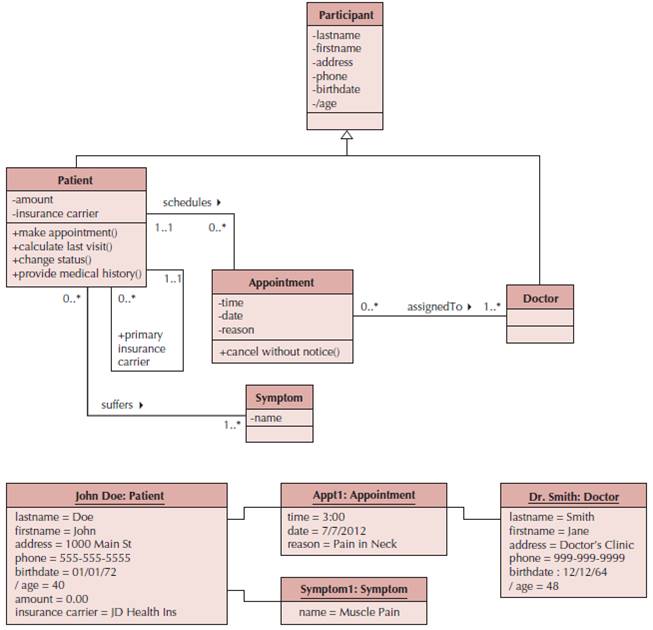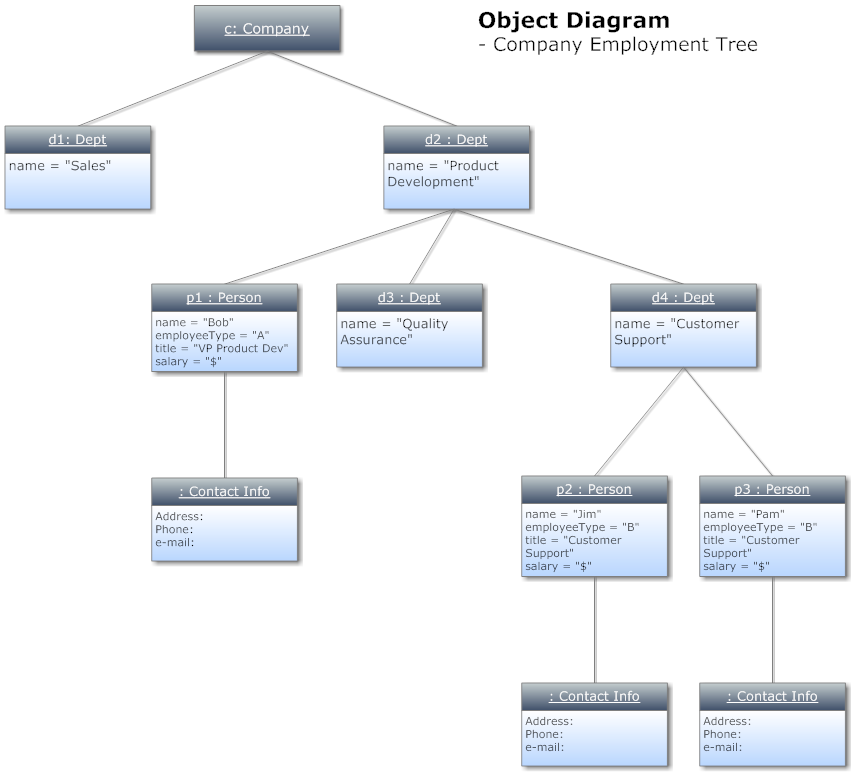Section 0: Module Objectives or Competencies
| Course Objective or Competency | Module Objectives or Competency |
|---|---|
| The student will be able to assess and apply Object-Oriented analysis and design methods like use cases to express user requirements, UML modeling, and other OO approaches. | Understand the rules and style guidelines for creating class diagrams and object diagrams. |
| Understand the processes used to create object diagrams. | |
| Be able to create object diagrams. | |
| Understand and explain the relationship between the structural and functional models. |
Section 1: Features
Although class diagrams are necessary to document the structure of the classes, a second type of static structure diagram, called an object diagram, can be useful in revealing additional information.
An object diagram is essentially an instantiation of all or part of a class diagram.
-
Class diagrams with instantiated classes.
- Example: instead of a Doctor class, create an actual doctor, say Dr. Smith.
- Assign values to each attribute.
- Used to discover additional attributes, relationships and/or operations or those that are misplaced.
The following are observations about Object Diagrams:
- Object diagrams are derived from class diagrams so object diagrams are dependent upon class diagrams.
-
Object diagrams represent an instance of a class diagram.
- The basic concepts are similar for class diagrams and object diagrams.
- Object diagrams also represent the static view of a system but this static view is a snapshot of the system at a particular moment.
- Object diagrams are used to render a set of objects and their relationships as an instance.
- An Object Diagram is a diagram that shows a set of objects and their relationships at a point in time.
- Object diagrams are rarely used. They show static relationships between objects and are generally used for making Class diagram more concrete when the static relationships are complex in Class diagrams.
Section 2: Justification
Unlike class diagrams, which represent an abstract model consisting of classes and their relationships, an object diagram represents an instance at a particular moment that is concrete in nature.
That means that an object diagram more closely models actual system behavior. The purpose is to capture the static view of a system at a particular moment.
So the purpose of the object diagram can be summarized as:
- Forward and reverse engineering.
- Object relationships of a system.
- Static view of an interaction.
- Understand object behavior and their relationships from a practical perspective.
Section 3: Examples


Section 4: Resources
Site on UML - Object Diagrams
This video explains moving from Class Diagrams to Object Diagrams:





